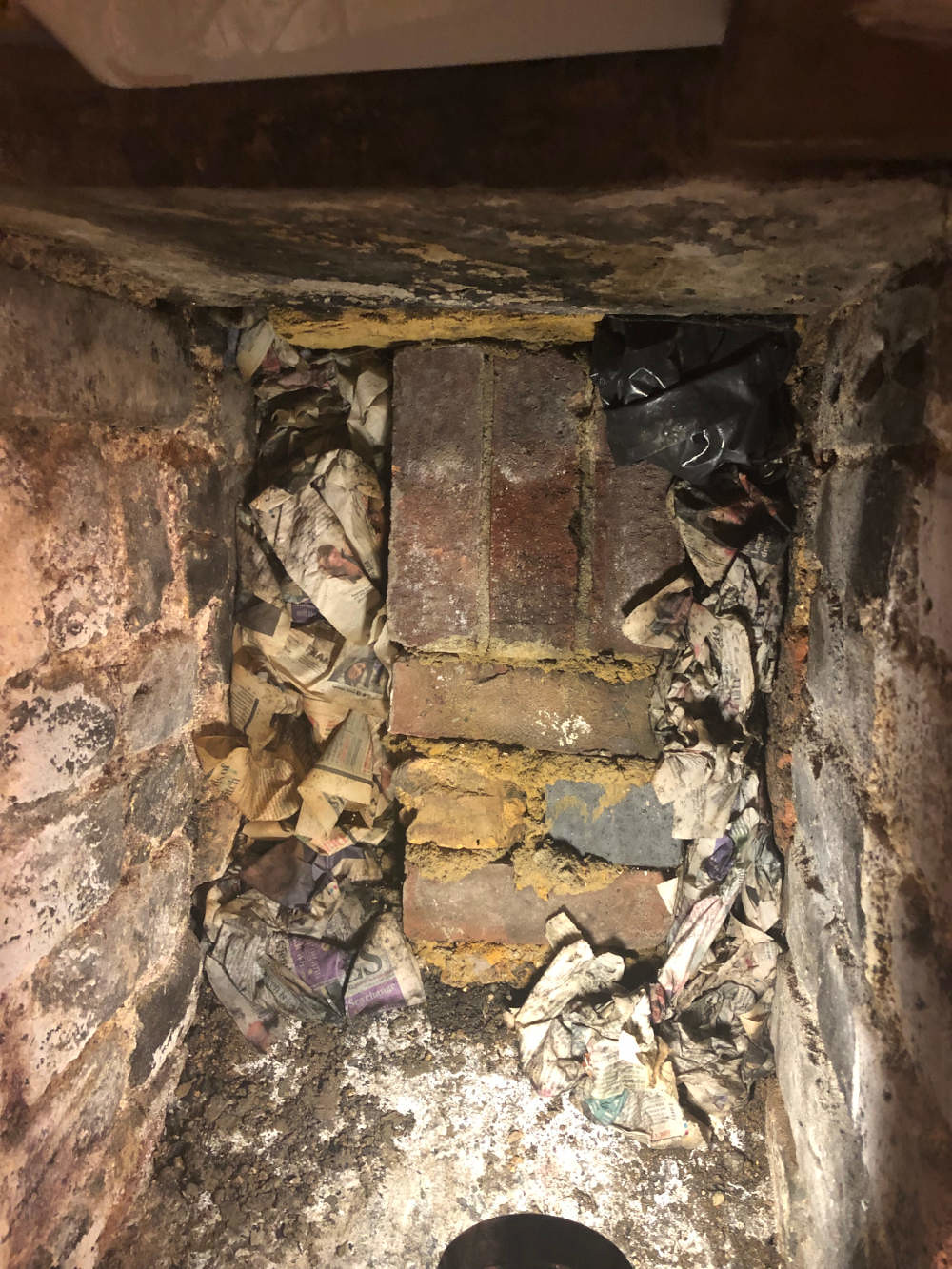

We live in a Victorian terraced house and a couple of years ago we re-worked the front garden, laying York stone where there had been conrete.
In the past, the old coal shoot of the cellar was covered in concrete that did not look great but most of the time kept the water out. (The rest of the front garden in front of the house also had broken concrete over it: ie it was not ever fully waterproof.) Occasionally the cellar did get damp, usually when the gutter was clogged. But now a lot of water is coming in, actually pooling on the cellar floor.
The guys who did the York paving just laid a large slab (above) over the coal hole, and supported it with a few random bricks inside the shoot. There is no damp proof membrane.
The cellar was never absolutely dry, but it was never as wet at this.
The paving has been laid at an angle so that the water does drain forwards into the small front garden. This is where most of the water goes.
The question is what to do. Should I:
1/ Raise some or even a lot or even all of the paving stones and lay a membrane underneath. This basically undoes all the work done in the front garden and starting over again.
2/ Block the old coal shoot more effectively.
In the photo there is newspaper to the side of the bricks and it is all damp, especially to the left.
I could seal things better. But how? With more mortar and bricks or with a waterproof filler of some kind? It is now a small space and difficult to access, with the bricks sitting in the middle of the coal hole keeping the York slab up.
If I did fill the coal hole with some mortar, any idea what type? It would need to be a loose mixture to get into all the cracks and potential access points for the water. It would mean filling up everything up to the brick support for the York stone.
I was wondering about some sort of waterproof foam filler, which I could use instead: but there is loose mortar, dirk and damp in there so it probably would not stick.
Of course, whatever I do the water will back up. But hopefully it will seep into the ground beneath the paving and end up in the front garden. Realistically, the cellar will still be prone to getting a bit damp, but we could live with that. It is water actually on the cellar floor that we want to avoid.
(I have also made things worse, by fixing up a water collection water butt into which the down pipe from the gutter flows. This water butt has been known to overflow, spreading a lot of water over the York slabs. It is also the case that the gutter might need clearing out as well, as it does every year: this was certainly a cause of dampness in the past.)
Any thoughts?

